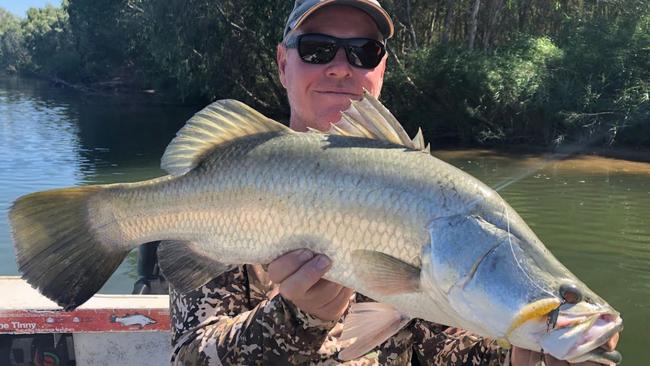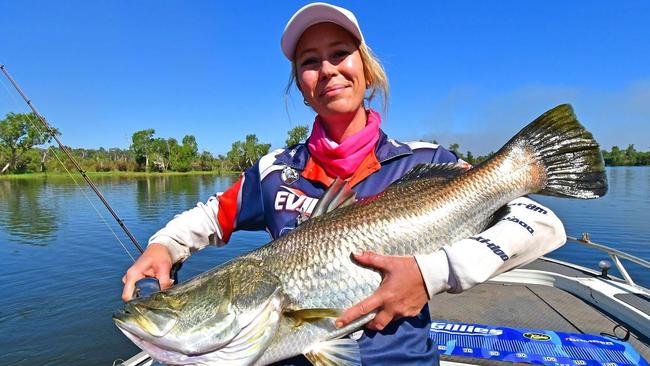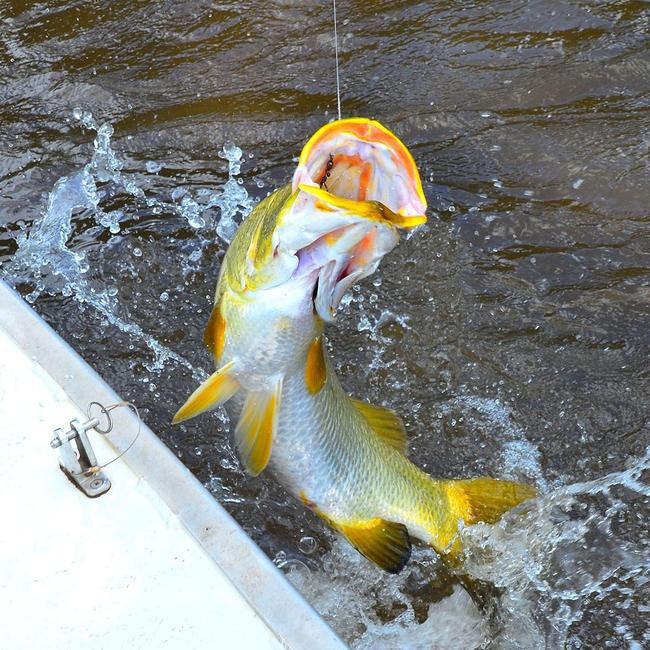Legendary fisherman Alex Julius teaches the secrets to angling for success in Kakadu
LEGENDARY fisho Alex Julius reveals some tactics used to reel in fish in Kakadu

Fishing
Don't miss out on the headlines from Fishing. Followed categories will be added to My News.
THE waterways of Kakadu are without a doubt some of the most spectacular in the Top End and have been enthralling locals and visitors alike for many years.
Tactics used to fish the billabongs of Kakadu are not dissimilar to those employed on the likes of Corroboree or Hardies.
MORE BARRA NEWS
Three winning barra caught over first Million Dollar Fish weekend
Top End’s Million Dollar Fish comp returns, now with seven chances to capture top prize
Million Dollar Fish $10,000 barra caught in the Top End
Expert tips to catch barra in NT News’ Million Dollar Fish mag
However, there are some other important considerations that need to be taken into account when fishing these local treasures for barramundi and saratoga – a worthy bycatch.
Unfortunately, a noxious floating weed, salvinia, is present in a number of Kakadu billabongs, so please be careful not to transport this invasive aquatic plant into other waterways by making sure your boat, trailer and gear are free from any clinging clumps or weed particles.
Billabongs such as Yellow Water, Home Billabong and Mardugal near Cooinda Resort are easily reached as they have sealed road access.

Salvinia is present in these beautiful waterways, which is unfortunate as it creates dense floating mats covering areas that would normally be fishable.
Less accessible are the likes of Four Mile Hole – currently closed due to a massive infestation of salvinia – Two Mile Hole, Alligator and Bucket billabongs, all of which require a solid trailer and rugged four wheel drive to safely traverse their bone-shaking corrugated access tracks and makeshift launching sites.
On the upside, the fishing in these more remote spots often makes up for the arduous journey.
The upper East Alligator River or, as termed, the “freshwater section”, starts at Cahills Crossing. The crossing is famous for its high concentration of saltwater crocodiles that lurk in close proximity waiting for the tidal section downstream of the crossing to rise and flood over.
Spring tides bring teeming schools of mullet closely followed by hungry barramundi within the swirling muddy flow, and a frenzy of croc commotion often ensues.

The East Alligator is a worthy destination for its scenic attributes alone and is navigable for some 5km upstream where a yellow buoy denotes the furthest limit of access.
The key to success on this waterway is to work subsurface structure vigorously by trolling deep-diving lures across or through the underwater obstacles.
Use your sounder to identify subsurface structure that may not be immediately obvious on the surface. These hidden snags are gold and can yield a barra jackpot as they are often seldom fished. Once a productive location has been discovered, it can be exploited more directly by casting vibes or heavy soft plastics to thoroughly probe the deep structure.
LIMITED TIME: New NT News subscription offer: $1 a week for the first 12 weeks
High spring tides at Cahills Crossing are approximately five and a half hours later than Darwin, so keep this in mind when fishing this section of the river. A barra bite inspired by the incoming tide cannot be ignored so trolling in the area immediately upstream from the crossing on the flood tide can really pay off.
Effective hard-body lures include Classic Barra in 10 and 15-plus, Killalure Flatz Rat and Reidys Big B52, while Zerek Flat Shad and Live Shrimp, Zman Diezel MinnowZ, soft vibes and weedless-rigged Gulp Baits are useful softies.


